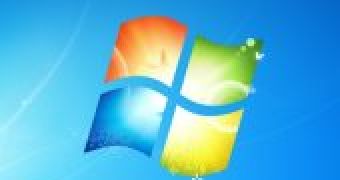When Microsoft broke the silence around the first service pack for Windows 7 and Windows Server 2008 R2, the company made it clear that customers should be expecting nothing more than a minor upgrade. At the same time, details on Windows 7 Service Pack 1 continue to be kept under a tight lid in Redmond, with the software giant focusing mainly on two upcoming features, Dynamic Memory and RemoteFX, both impacting its desktop virtualization stack. It appears that Service Pack 1 for Windows 7 and Windows Server 2008 R2 is already getting love from Microsoft partners, with a variety of companies already announcing support for the feature.
“I am very happy to confirm that the following hardware and software companies, among others, have engaged with us as RemoteFX partners with the goal to build a formidable ecosystem of first-class user experience solutions: AMD, AppliedMicro, Citrix, Cloudium Systems, Dell, DevonIT, HP, Nvidia, Quest, Texas Instruments, ThinLinx, Via, Wondermedia and Wyse,” Max Herrmann, from the Remote Desktop Services (RDS) marketing team, revealed earlier this week.
The software giant shared the first Windows 7 SP1 details at its Desktop Virtualization Hour, a live online event focused on desktop virtualization and VDI. RemoteFX, available with the first service pack for Windows Server 2008 R2, is designed as an RDS platform capability, which will allow customers running virtual and session-based desktops and applications to enjoy the same media-rich, local-like user experience as on physical machines.
“RemoteFX, which will complement the traditional client-side rendering capabilities that RDP has provided for many years, takes advantage of virtual GPUs (graphics processing units, sometimes referred to as ‘graphics adapters’) on the host and advanced codecs to enable multi-user support for full-fidelity video, Silverlight and 3D applications, essentially any media content that exists today – plus any you can imagine for tomorrow. RemoteFX is designed to do that for a broad range of client devices including rich PCs, thin clients, and other, even simpler low-cost devices, leveraging hardware acceleration on the Hyper-V host to render rich 2D and 3D screen content for multiple users on the same host,” Herrmann stated.
Citrix, for example, has already announced an agreement with Microsoft, which will lead to the integration of RemoteFX technologies in the XenDesktop suite of products as well as in HDX. Of course, the above enumeration of Microsoft Partners is a clear indication that other companies in addition to Citrix are gearing up to support the new Windows 7 SP1 features with their products.
Following the delivery of Windows Vista SP1 and Windows Server 2008 RTM/SP1, Microsoft has joined its client and server operating systems at the hip. In this context, just as SP2 was a single upgrade for Vista SP1 and Windows Server 2008 SP1, so will SP1 be a single new step in the evolution of both Windows 7 and Windows Server -2008 R2.

 14 DAY TRIAL //
14 DAY TRIAL //